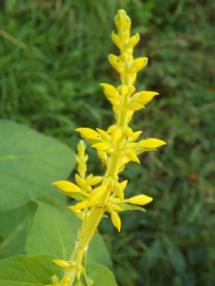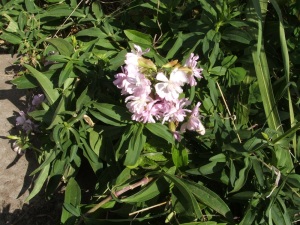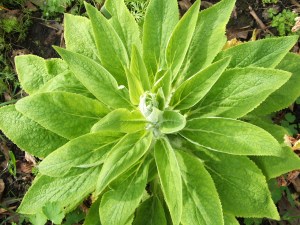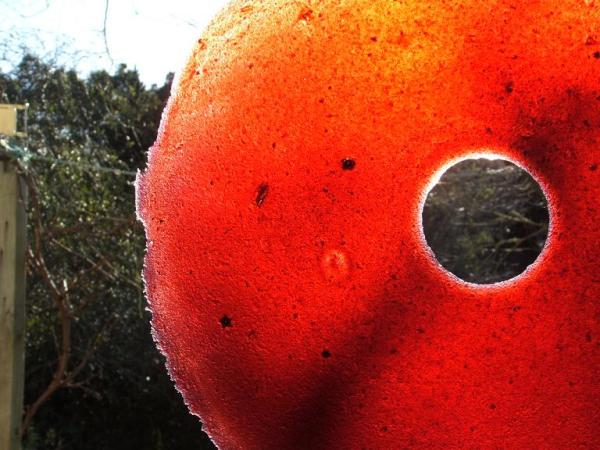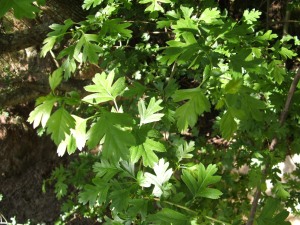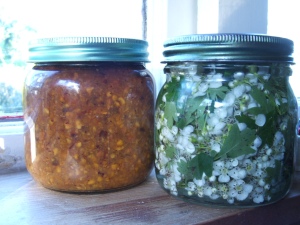I’ve been wanting to make a photographic essay of our ointment making process for ages now. I’ve finally managed to catch all stages, of the hot maceration method, except the very first one, which was picking the leaves. We go up the range not far from here, but climbing into the steep gully where the Kawakawa grows is a fraught business, it is steep, tangled with vegetation & full of rocks & hollows, added to this there is a fair bit of Ongaonga (very mean native Stinging Nettle) growing there. Geoff & Giles have a modicum of ‘mountain goat’ in their genes, but I am an accident waiting to happen, & need help just negotiating the fence, hence no camera & no photos, maybe I’ll add some in later. Geoff thinks it’s quite likely that these plants were introduced to the area, many years ago by local Maori, who had a walking trail crossing this area. It was common for useful plants to be planted along the trails, for use by the travellers. We liked the idea of this, & thought of those people struggling across rough terrain, their knowledge & history, & we felt privileged to share in that cycle, & we made sure to thank the plants & let them know we planned to use them for healing purposes.

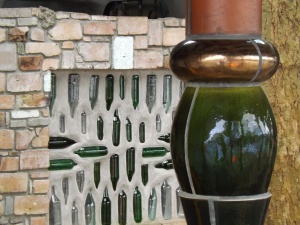
We were first asked to make an ointment with Kawakawa leaves, to supply the Grass Hut in Kawakawa, the town in Bay of Islands where Friedensreich Hundertwasser lived & designed & helped build the amazing public toilets. Our next experience with the plant, was when we were away at Waipatiki Beach. Geoff trod on something sharp on the rocks, & within an hour or so his foot was red & swollen, & he was feeling feverish & shaky. Being some miles from town & of course we had left our first aid kit at home, not anticipating any need over a 3 day stay, we were feeling a bit panicky. I felt quite lost without our normal medicinal herbs, & went outside to wander the garden to see what plants I could find. There were some healthy Kawakawa plants growing, so I thought I’d make a poultice & see if it would help. I chopped some leaves up, & poured boiling water on them, binding it together with a slice of bread, & squishing it all up through my fingers. The mush was folded into a piece of kitchen towel & put onto Geoff’s foot, this was then held in place with a strip of gladwrap. Almost immediately Geoff’s foot started to feel better, & by bedtime he was all fixed.

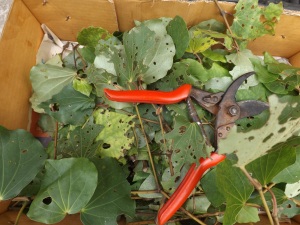
So now Kawakawa is a plant we know & trust. we have planted a few plants under our established trees here, but as yet they aren’t thriving, funnily enough we have one in a pot in the kitchen & it is so happy, we may just have to fill the house with them! The domestic plant hasn’t been attacked by caterpillars, but the ones we gathered on the range were quite holey. This is a good thing apparently, as the chewed plants produce chemicals in response to the attack & this increases their medicinal properties.
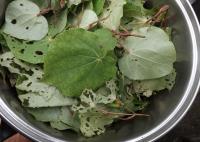
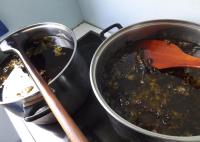
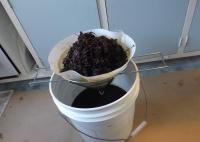

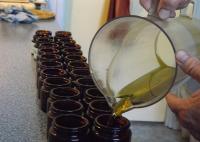
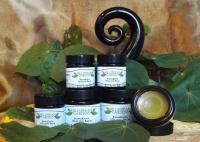
We make our leaf oils using this simple method,1) pick & sort leaves,2) cover with oil & simmer, really, really gently. We cook the leaves until they feel barely crisp, then we let them cool. 3)Once they are cool we pour the brew through an oil filter to remove all the bits & pieces. We store the base oil in large bottles, in the dark. when we need a batch of ointment we measure out the oil,4) & put a little in the saucepan with beeswax. Once this is melted we add the rest of the oil, & stir to make sure its all amalgamated. 5)Pour into clean jars &6) label. This is a basic herbal ointment, easy to make, keeps well & is wonderfully effective.
It is most important to identify your plants accurately, & if you are gathering from the wild make sure you are picking in an area that has not been sprayed, also don’t strip the area, always leave enough plants behind to keep growing.
We generally make our ointments in batches of 20 or 30 at a time, & give them an 18 month best before date, although they last a lot longer than that.
If you are not feeling up to making your own Kawakawa Ointment we now have it available from our online shop, both in our standard amber jars & in a fancy tin!!


